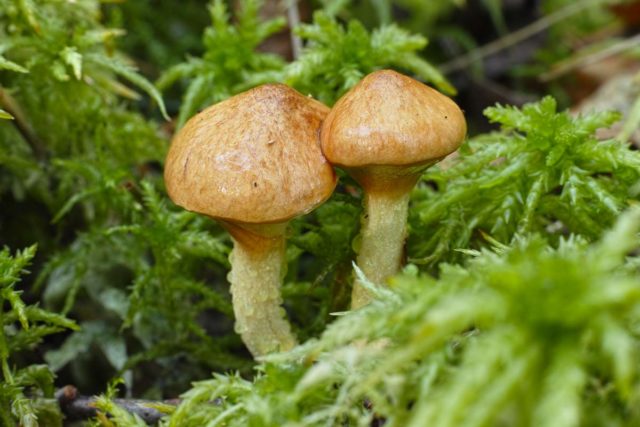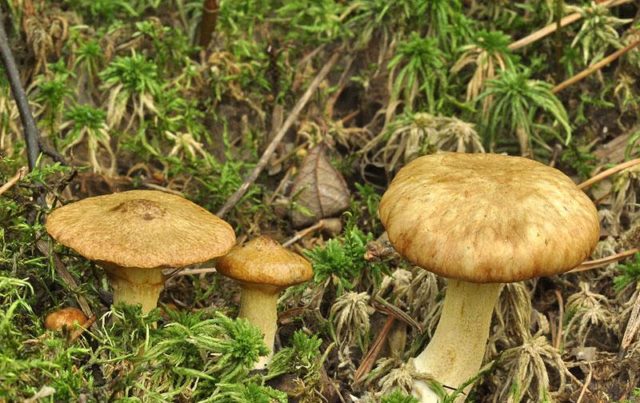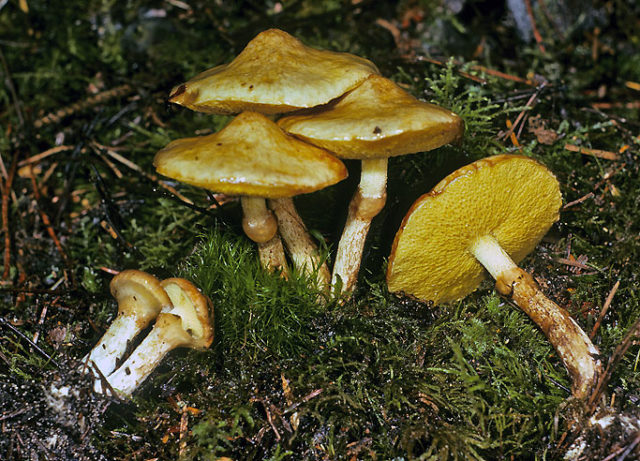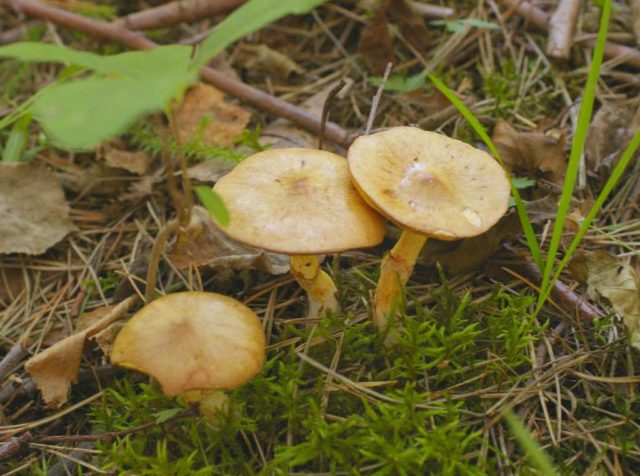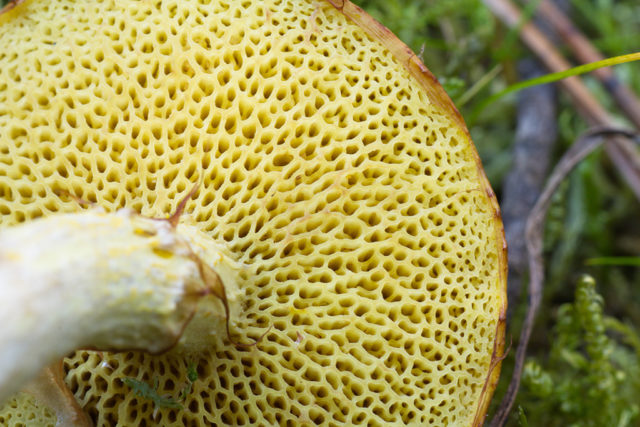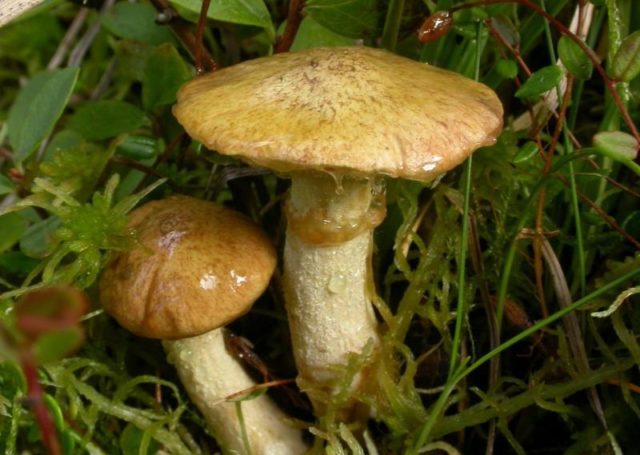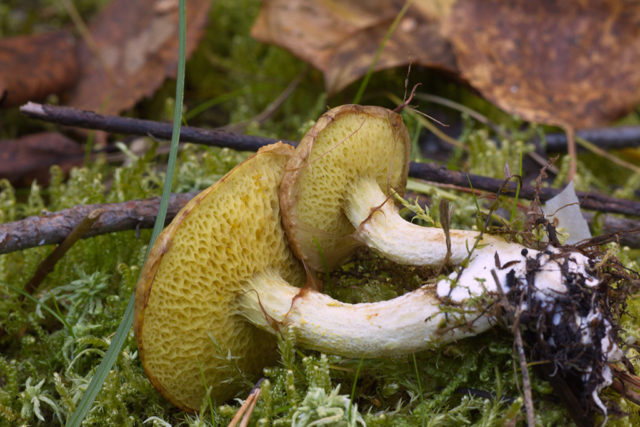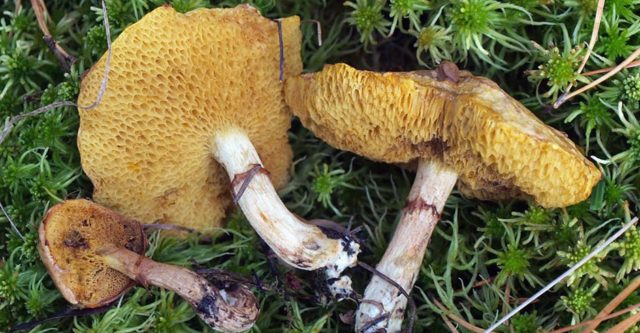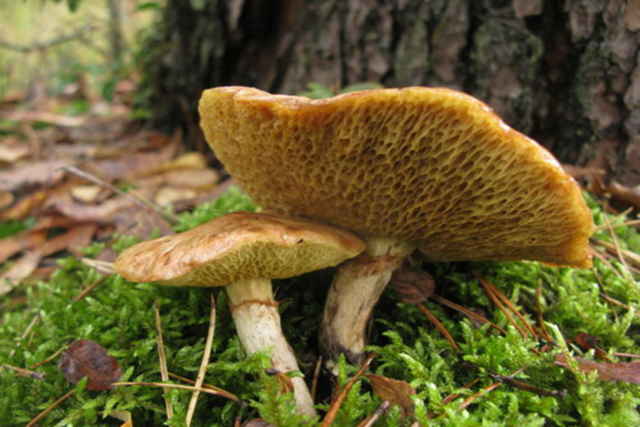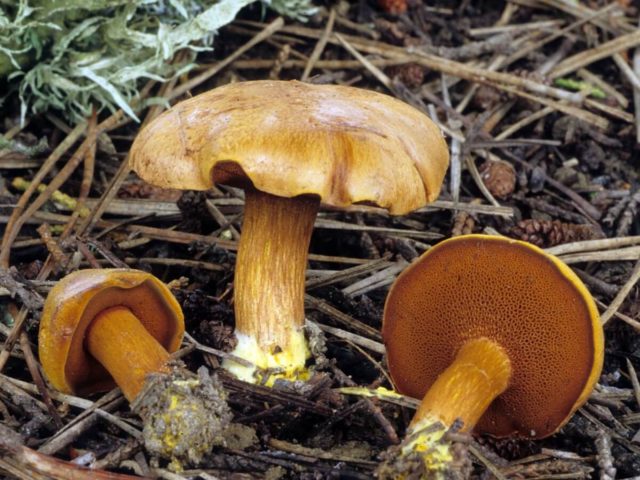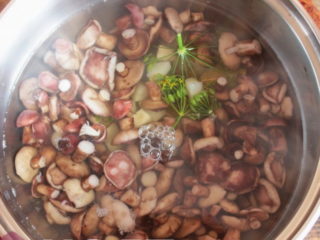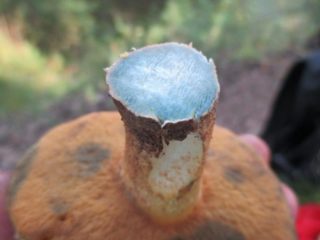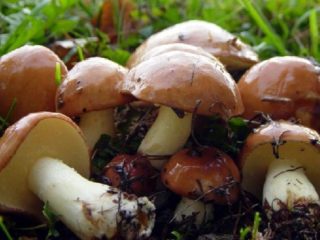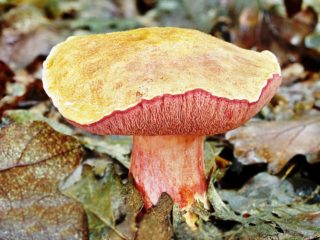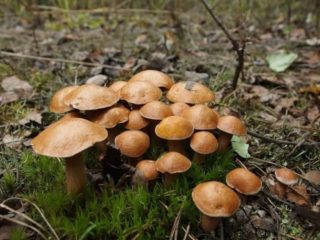Content
Among the many varieties of boletus, Suillus flavidus, also known as swamp butterdish, or yellowish, is undeservedly deprived of attention. Although it does not enjoy the popularity of its related species, the gastronomic qualities of Suillus flavidus are quite capable of placing it on a par with the tastiest representatives of the mushroom kingdom.
What does a swamp oiler mushroom look like?
This marsh native belongs to the tubular mushrooms of the Oily family. Despite the fact that they are not ranked among the "noble" mushrooms, which are not a shame to boast of in front of experienced mushroom pickers, bog boletus is still worthy of recognition. In the photo below, you can evaluate these representatives of the genus Suillus.
Description of the hat
The cap of the marsh oiler is relatively small for specimens of its genus: its size varies from 4 to 8 cm, depending on age. At the same time, it does not differ in thickness, and, like other representatives of the genus Suillus, is covered with characteristic oily secretions.
The shape of the cap of the swamp fungus also changes in accordance with the stages of development of the organism. In young specimens, it is hemispherical, but as it grows, it flattens, acquires a small tubercle in its upper part and slightly stretches closer to the leg.
The cap of the marsh oiler, as seen in the photo, has a discreet color, in which yellowish shades prevail. For this feature, the species received one of its names - yellowish oiler. However, the color palette of the hat is not limited to yellow colors. Often there are specimens whose yellowish color is combined with beige, grayish or pale green tones.
The tubular layer of the marsh oiler's cap is rather fragile. Its distinctive feature is rather small pores, the color of which varies from lemon and all the same yellowish to ocher.
The dense flesh of a yellowish oiler does not have a pronounced odor and does not emit milky juice. The cut of the swamp representative of the Oily family has a pale pink color.
Leg description
The stem of Suillus flavidus is quite strong and has a cylindrical, slightly curved shape. Its thickness is 0.3 - 0.5 cm, and in length it can reach 6 - 7 cm. young oily marsh when detaching the cap from the stem during growth. The leg itself has a yellowish color, which turns into a yellow-brown hue below the ring.
Other features of the swamp oiler include the elliptical shape of the spores and the coffee-yellow color of the spore powder.
Swamp Butter Edible Or Not
Despite their inconspicuous appearance, yellowish boletus are edible mushrooms. They are edible in almost any form. These marsh mushrooms can be eaten raw or pickled and are great for frying and drying.Thanks to their juicy pulp, which has a pleasant taste, these mushrooms are able to add novelty to many familiar dishes: from salads and aspic to soups and pastries.
Where and how does the swamp oil can grow
As the name suggests, swamp oiler grows mainly in swampy areas, singly or in small groups. Suillus flavidus can be found in swampy pine forests, river floodplains or ditches, where it hides among mosses, successfully merging with its surroundings. The best time to collect yellowish boletus is the period from late August to early October. True, this bog species is quite rare, despite the wide distribution area. It includes many European countries of the temperate climatic zone, such as Poland, Lithuania, France, Romania and most of Russia, including Siberia.
For those who are still lucky enough to stumble upon this species, it is worth remembering a few simple rules that will allow you to collect the most delicious specimens without harming yourself and the environment:
- Preference should be given to young marsh mushrooms, the cap of which does not exceed 5 cm in girth. Older descendants of the genus Suillus flavidus become tough and lose their delicate taste.
- It is not recommended to collect marsh boletus if dry weather persisted for several days or there were continuous rains.
- Since bog boletus tends to accumulate toxic substances in large quantities, they should not be collected near industrial zones, along roadsides or along the banks of polluted rivers.
- When collecting Suillus flavidus, in no case should they be pulled out of the soil so as not to damage the mycelium. It is best to cut the marsh crop with a sharp knife just above ground level.
In addition to these recommendations, for the sake of your own safety, you must avoid the inedible representatives of the mushroom kingdom, which look like a yellowish oil can.
Swamp oiler doubles and their differences
The yellowish oiler has no poisonous counterparts, and it bears little resemblance to other species of the oiler family. However, it can be confused with the inedible pepper mushroom Chalcíporus piperátus. It is also called a pepper oil can, although it belongs to a different family. This reddish-brown representative of the Boletovs with a glossy non-sticky cap up to 7 cm in diameter grows mainly under pine trees, less often in spruce forests. Its tubular layer is brown in color, and its thin leg reaches 10 cm in height. The flesh of Chalcíporus piperátus tastes like hot peppers. And although this fake butter dish is not poisonous, the bitterness of even one pepper mushroom can ruin any recipe.
Its Siberian counterpart, Suillus sibirikus, distantly resembles a swamp butterdish. It is considered conditionally edible, since this species can only be consumed after peeling and processing for 20 minutes. The convex hat of the Siberian representative is colored in yellow-brown or tobacco-olive tones and grows up to 10 cm. Its slippery yellow flesh does not change color when cut. The leg of the mushroom, also yellowish, reaches a height of 8 cm. It is somewhat thicker than that of the marsh variety, up to 1 - 1.5 cm in girth, and is covered with red spots.
Conclusion
Although the swamp oiler is quite inconspicuous, it definitely deserves the attention of mushroom pickers. Its pleasant taste, dense texture, and versatility of use will appeal to many connoisseurs of the gifts of the forest.
